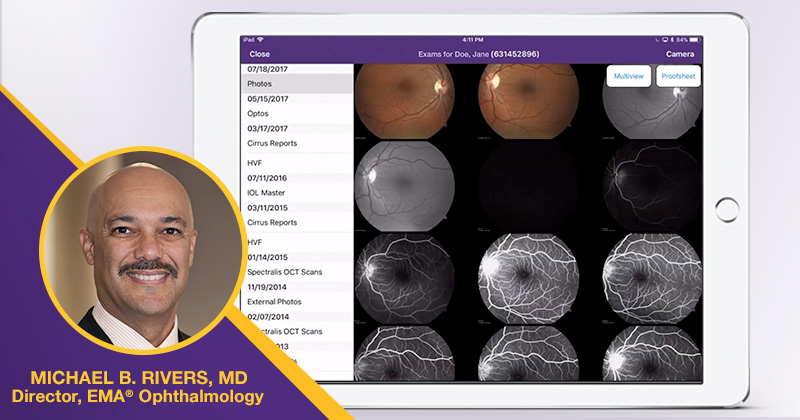Practice Management Innovation

Today’s technologies are advancing workflow efficiency
Say you want the patient you just examined to return in 3 months for a visual field test for suspected glaucoma. If you’re like many ophthalmologists, you can document that request in the patient’s electronic medical record (EMR), but you still have to send a hard copy to the front desk because the HL-7 “pipeline” connecting your ophthalmology EMR with the practice management (PM) system can’t handle it.
If you were using today’s emerging, state-of-the-art PM/EMR systems, on the other hand, by the time your patient approached the front desk, your request would appear as a pop-up window on the medical assistant’s computer screen and permit him to automatically create the appointment and add it to the PM system. How cool is that?
The fact is that many ophthalmology practices are still lumbering along with either very good PM systems or very good EMR systems, but not both, at least not when it comes to systems that can communicate well with each other. Thankfully, today’s PM makers are doing away with the HL-7 protocol and replacing it with systems that combine PM and EMR systems into one seamless, all-encompassing package that streamlines practice workflows from front to back.
Here’s another example: Diabetes is a virtual epidemic in the U.S.; even 30- and 40-year-olds are going blind from diabetes. Yet, anyone who goes blind from diabetes has already been having ocular symptoms for as long as 4 or 5 years. As a result, there’s a significant window when early treatment can delay or even prevent the ocular complications of diabetes. It’s critically important for ophthalmologists to closely track these patients.
True, PM systems are available that permit searching for diabetic patients by CPT code. But, what’s more effective is the ability to search by patients’ high-risk characteristics and the dates of their latest exams. The new combined EMR/PM systems enable ophthalmologists to search for, track, and get these patients started on treatment before they suffer a retinal detachment or hemorrhage.
Image Management
These new systems are taking practice efficiency to the next level also through better image management. EMR systems are still being used today that force practitioners to look at, for example, the patient’s current visual field on one screen, and their previous visual field on another screen. Sometimes, they even have to visit another computer outside of the exam room, write down the data, and then return to the exam room to document and discuss the findings with the patient. Talk about disruption.
But, today’s systems combine images with the patient’s EMR; when there’s a need to compare the patient’s visual field today with their visual field from three months ago, it’s a matter of simply pressing an “image” link on the screen and up pop the images for side-by-side comparison.
Enhancing Research
More and more ophthalmologists are becoming engaged in clinical research, and the analytics tools included in the latest systems enable them to quickly identify patients who are eligible for clinical research protocols. Until now, that has been a time- and labor-intensive task. But, with the new combination systems, it’s a matter of entering the necessary clinical features and letting the computer search the EMR.
Up-front Enhancements
Those are just some of the improvements showing up on the back end of the practice. On the front end, medical assistants in most practices interview patients about changes in medication, appearance of new symptoms, and other items. This takes time. Today’s PM systems come with tablets for patients to use to answer questions like these in the waiting room; the subsequent interview goes more quickly and efficiently. Some companies are even releasing smartphone apps patients can use to complewwete these tasks at home, ahead of their examinations.
Putting the Focus Back on Patient Care
Recently, my wife came home from a doctor visit and said, “The doctor kept asking questions, but she was looking at the computer the entire time. All I did was look at the back of her head!” That’s not good medical care. Today’s state-of-the-art PM/EMR systems for ophthalmology go a long way toward reducing the focus on filling in checkboxes and data fields, and returning it to its right place: on improving patient engagement with their own eye care.
